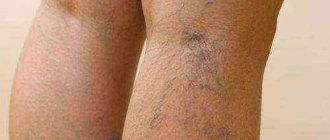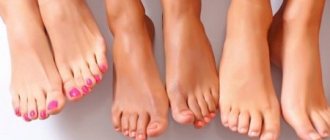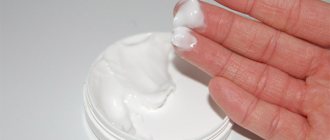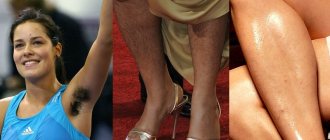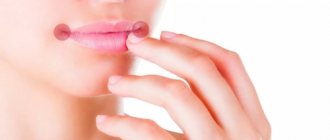The main causes and symptoms of swelling of the legs
Every person in life has encountered swelling of the legs. Possible reasons: standing for a long time, wearing uncomfortable and tight shoes, tiring trips. One-time swelling can appear for other reasons:
- Drinking large amounts of water after eating too salty foods.
- There is a disruption in the process of natural removal of fluid from the body.
- If a woman is pregnant.
There are alarming cases of edema of the lower extremities, which have become symptoms of diseases:
- Varicose veins The disease begins with severe swelling of the feet. The lower parts of the legs become most pronounced in the evening on the right and left legs.
- Thrombophlebitis. The disease affects the left leg and the right, and the legs swell differently. The asymmetry is extremely noticeable; it is possible to identify the disease without much effort. Symptoms are typical: fever, pain in the calf area, and it is difficult for a person to walk.
- Postthrombophlebitis syndrome. The disease is characterized by swelling in the knees, which turns into swelling of the legs in different directions. In the evening, the swelling often becomes greater, and after a night's rest it disappears.
- Vena cava inferior. A characteristic sign is that swelling appears in the gluteal area and spreads to the peritoneum and genitals. The process causes a lot of inconvenience, and some swelling causes pain.
- Diseases of the nervous system. Diseases include stroke and leg paralysis. The disease provokes the appearance of edema due to the leakage of fluid through the capillaries. Symptoms also develop when the endocrine system is disrupted.
- Getting injured. Swelling often appears if a person is injured: a dislocation, bruise or fracture. The traumatic type of swelling will go away after the damage is healed.
Treatment with folk remedies
If swelling in the lower extremities is not caused by pathologies that require immediate medical intervention, you can get rid of its unpleasant symptoms yourself with the help of special physical exercises, procedures and folk recipes, which we will tell you about in this article.
Gymnastics for leg swelling
A set of simple exercises will relieve you of swelling caused by lymph stagnation.
- Spin the “bicycle” for 1 minute.
- Rotate with your feet - 1 minute clockwise and counterclockwise.
- We walk on tiptoes barefoot - 3 minutes.
- Raise yourself onto your toes and drop sharply onto your heels – 10 repetitions.
- Squeeze and relax your toes as much as possible – 1 minute.
- In a lying position, we make swings with our legs raised up in different directions - 5 minutes.
Swimming is also beneficial. Visit the pool 3-4 times a week.
Folk remedies for swelling of the legs for internal use
- A decoction of flax seeds . Pour two tablespoons of seeds into a liter of hot water, bring to a boil and cook for 15-20 minutes over low heat. Cool to room temperature and strain. Take ½ glass every 2 hours. For effective treatment, you should take a two-week course.
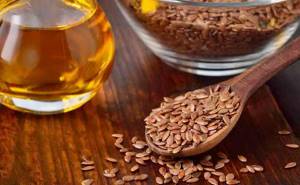
- Parsley infusion . The diuretic properties of parsley are often used to prepare remedies for the treatment of swelling of the legs. Leaves and roots are passed through a meat grinder. A tablespoon of the product is poured into a thermos with boiling water and left for about 8 hours, after which it is filtered and taken a tablespoon every hour for three days.
- You can also use parsley seeds . To do this, grind them, pour two tablespoons with a liter of cold water, and leave overnight. Strain through cheesecloth and take 3 tablespoons three times a day for no longer than two weeks.
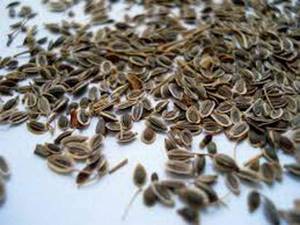
- Birch decoction . You can use dry leaves or buds. Pour a teaspoon of the product into ½ cup of boiling water, leave for 20 minutes, and filter. The decoction is divided into three parts and drunk in the morning, afternoon and before bed. The course lasts about a month.
- Decoction of watermelon rinds . The berry peels are crushed and filled with water in a ratio of 1:10. Bring to a boil, reduce heat and cook for 15-20 minutes. The decoction is filtered and drunk four times a day, ½ cup, until the symptoms disappear.
- Hawthorn infusion . Place a tablespoon of hawthorn flowers and berries into a bowl, pour in 500 g of boiling water, cover with a lid and leave for about 30 minutes. Strain and take 1/3 cup three times a day.
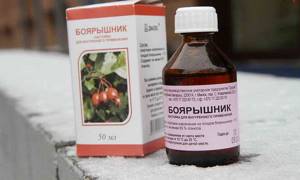
- Wine and honey drink . A tasty and healthy drug, it is enough to consume 50 g three times a day before meals. To prepare, mix dry red wine with honey in a 2:1 ratio.
- Cornflower infusion . A teaspoon of flowers and herbs is poured into 250 g of boiling water and left for 50-60 minutes. Strain and apply 20-25 minutes before meals three times a day. The duration of treatment depends on the characteristics of the body and is selected individually.

- Infusion of melon seeds . Two teaspoons of seeds are poured into 500 g of boiling water, left under a closed lid for 15 minutes and another hour with the lid open. The dosage of the product is ½ cup six times a day.
- Vegetable fresh . Combine 50 g of freshly squeezed lemon, cucumber and carrot juice and add boiled warm water to a full glass. Take 75 g three times a day until the symptoms of edema disappear.
Home Treatments to Treat Leg Swelling
Rubbing
Nettle infusion for rubbing . The roots of the plant are crushed. Three tablespoons are poured into a glass of olive oil and boiled for 4-5 minutes on low heat. Cool and place in the refrigerator. Use for rubbing before bedtime. Course – 30 days.
Garlic broth. The product, of course, has a specific aroma, but is quite effective. A tablespoon of chopped garlic is poured into 500 g of cold water and cooked for 3-4 minutes. Strain through cheesecloth. For rubbing, garlic gruel left on gauze and the broth itself are used. The grounds are rubbed on the feet in the morning and evening, and the broth is used during the day. The duration of the procedure is a month.
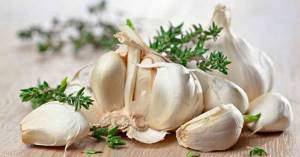
Kalanchoe tincture . The leaves are passed through a meat grinder. A glass jar with a capacity of 500 g is filled ½ with crushed raw materials, topped up with alcohol to the brim. Cover with a lid and leave in a dark place for 14 days, shaking occasionally. The course of treatment is long, up to six months. Rub your feet in the morning and before bed.
Sea salt baths for swelling of the legs
To get rid of edema, salt baths are a fairly effective remedy (subject to regular and long-term use). For eight weeks: dissolve a tablespoon of sea salt in three liters of warm water. Take a bath no longer than a quarter of an hour. In addition, this bath will help get rid of unpleasant foot odor. It should also be noted that it is effective for treating cracked heels.

Why women and men experience swelling in their legs and calves
If we talk about swelling in the legs of women and men, it is possible to name the main reasons:
- Work associated with heavy physical activity, when the legs are constantly under tension.
- Eating a lot of unhealthy food, including excess fat and salt, which greatly affects the calves.
Edema in women occurs due to pregnancy, after childbirth, and during menopause. These processes are natural, will pass quickly, and the swelling will disappear on its own.
Methods for treating edema of the lower extremities
There are a number of known ways to get rid of edema of the lower extremities. Let's highlight simple methods:
- Limit consumption of salty and fatty foods.
- Don't drink a lot of liquid. The daily volume of water is no more than 2.5 liters.
- Take water procedures more often. Water helps you relax and relieves swelling.
- Rest often; with rest, swelling of the legs decreases.
When swelling of the calves and legs is associated with a disease, treatment is prescribed strictly by a doctor, and individually. More often, doctors recommend that patients adhere to a healthy lifestyle and wear special compression garments.
If you are prescribed to wear compression garments, you do not need to wear them for the whole day; swelling of the legs should go away on its own, with proper rest. The doctor prescribes the use of a special gel or ointment that relieves swelling and reduces inflammation. The doctor will prescribe a diuretic drug, the fluid will begin to be eliminated from the body faster.
When treating cardiac edema, it is necessary to carry out complex treatment, where drugs to relieve edema and drugs affecting the heart are prescribed.
It is possible to use folk remedies that remove swelling. This includes foot baths and the use of herbal infusions. When using decoctions, be careful; selected herbs can cause nausea if the components are intolerant. Water procedures will help relieve inflammation, remove swelling, and relax your legs, including your calves.
If you do nothing, swelling will cause discomfort and provoke the transition of the disease into an acute form that is difficult to treat.
Prevention of swelling of the lower extremities
For preventive purposes, remember, movement is life. Walk more and have fun.
Do not eat a lot of salty and fatty foods; such food not only delays the removal of fluid from the body, but also negatively affects your health.
Swelling of the feet and legs, which is medically called edema
, occurs when fluid accumulates in the intercellular spaces. Swelling of the feet, ankles, and lower legs is common, but swelling can occur in any part of the body, causing systemic symptoms.
Causes
Swelling can be caused by serious kidney, heart, liver, or blood vessel problems, but many other factors can contribute to edema, including
- unbalanced diet high in salt and carbohydrates;
excessive use of laxatives;
excessive use of diuretics;
excessive use of medications;
taking contraceptive or hormone replacement medications;
pregnancy and PMS;
sodium retention in the body;
varicose veins and previous phlebitis;
allergic reactions;
neuromuscular disorders;
Diuretics for swollen legs
These drugs can be used in combination during treatment. When taking it, it is important to follow the rules:
- You should not use diuretics in the afternoon.
- You need to drink only the doses prescribed by your doctor.
- The effect does not appear immediately, so it is important to drink the entire course.
- If more than a month has passed since you started using the infusions, then you need to change the composition.
- You should not drink infusions if you have stomach or kidney diseases.
- You should not take diuretics during pregnancy.
Prevention and treatment
The main goal of treatment is to reduce swelling, and the first remedy for this is to ensure that the legs are elevated. Raise your legs above heart level so that there is minimal pressure on the back of the knee, hips and lower back. You can elevate your legs while sitting in front of the TV on a reclining chair. Many devices that you can use at home or at work will help reduce swelling.
Other ways to reduce swelling:
- Foot pillows that support your feet in an elevated position while you sleep.
Elastic socks, stockings and tights with a supportive effect, industrially manufactured or made to order.
- Elastic socks, stockings and supportive tights vary in compression and length and are selected based on the degree and size of swelling.
Suitable shoes and socks. To get the best shoe size, buy them after lunch.
Ways to reduce swelling:
- Increase muscle load, walk more.
Try to avoid standing in one place for long periods of time.
Try not to sit cross-legged.
Limit your salt intake.
Do not overuse diuretics, although a short course of diuretics may be helpful.
Don't overuse laxatives.
Drink more plain water.
If possible, do not take birth control or hormone replacement medications.
Use a compression pump to force fluid back into the blood vessels.
If the swelling does not disappear, but gets worse, you should consult a doctor.
ATTENTION! All information posted on this site is advisory in nature. In each individual case, consultation with a specialist is necessary.
Edema of the legs is a symptom that manifests itself in the lower extremities. It consists of a pathological increase in circumference, the appearance of a tumor, discomfort and sometimes even pain. It can occur in any segment of the population, regardless of standard of living and social status, in men and women.
The appearance of a tumor can have varying degrees of manifestation, be located only on one side or be strongly expressed on several sides. Carefully examining the patient, based on signs and symptoms, the specialist doctor identifies the causes, establishes a diagnosis and prescribes the most rational treatment.
Diagnostics
The very first and mandatory way to diagnose possible diseases that provoke swelling of the calf muscles is to examine and palpate the painful areas by the attending physician. In the future, the specialist can send the patient to:
- taking a general blood test;
- detailed ultrasound examination;
- tomography;
- radiography;
- analysis of hormonal balance.
Depending on the results of the examination, the doctor may recommend normalizing fluid intake and streamlining the diet, or prescribing more serious treatment using medications and physiotherapeutic procedures.
What causes swelling?
The most common reasons:
1. Excessive fluid intake provokes severe swelling of the legs even in physically healthy people. Large amounts of water and salt provoke the appearance of stagnation, which greatly affects the metabolic process; the heart does not have time to pump too much blood, and it accumulates in the legs, causing swelling.
2. Excess weight. Blood and other body fluids have difficulty passing through large amounts of fatty tissue.
3. Tired legs, overwork. Sedentary or, conversely, standing work, heavy physical activity, uncomfortable body positions for a long time, sitting on too hard or too soft surfaces, a cross-legged position, periodic tucking of the feet under oneself - all these are the causes of stagnation of fluids in the body, microcirculation disorders and their subsequent pathological accumulation.
4. Cardiovascular disorders.
5. Varicose veins. With varicose veins, swelling increases gradually, increasing and accumulating in the evening or when standing for a long time in an upright position, hydrostatic pressure in the veins increases, causing blood stagnation. The vessels lengthen, become thinner, and lose their elasticity. The longer you delay treatment and allow it to progress, the more likely your legs will become swollen and painful.
6. Hormonal and metabolic changes in the body that occur in older people. Over the years, the human body becomes more difficult to cope with environmental factors. Metabolism slows down, blood vessels wear out, and a number of chronic diseases appear that provoke various complications. In women over 50 years of age, menopause may be the cause.
7. Why do women's legs swell? A fairly popular answer is wearing uncomfortable high-heeled shoes. Constant fatigue and tension have an extremely negative impact on your health. Poorly fitting shoes can not only cause sweating and swelling, but can also lead to foot deformities later on. In addition, the fair sex is very susceptible to the development of swelling in the ankles and calves during pregnancy - the increased load on the legs and spine, and increased body weight negatively affect the legs.
8. Chronic kidney disease. It occurs on the back of both legs and is not accompanied by discomfort, pain or itching under the skin. It is imperative to pay attention to the color of urine, its daily amount (with diseases of the urinary system, it decreases sharply), and the appearance of dark circles under the eyes.
9. The legs in the ankle area may swell due to a fairly common disease, the treatment of which, unfortunately, receives very little attention - flat feet. Also, the cause of the pathology can be various minor injuries, tucking when the foot is placed incorrectly - in this case, the calves of the legs become very swollen.
10. Intestinal diseases. The swelling is similar to that that occurs with kidney disease, but instead of frequent urination, another symptom appears - constant diarrhea.
11. Sometimes the causes are recent acute respiratory bacterial and viral infections.
12. “Elephantiasis.” Disruption of the processes of protein and molecular metabolism and microcirculation in tissues and skin, weakening of lymph outflow in the subcutaneous tissue. The feet swell so much that over time they become like those of an elephant, hence the name. The reasons for the development of this pathology are very specific, treatment occurs under the strict supervision of several medical specialists.
13. Diseases of the thyroid gland. In this case, the swelling has a characteristic feature - it is very elastic. If you press on them, there will be no dents or pits. Such swellings are located in the lower parts of the legs. The disease is accompanied by constant fatigue, lethargy, swelling of the tongue, and a tendency to have difficulty defecating.
14. Thrombophlebitis of deep and superficial veins, however, in this case the tumors are accompanied by an inflammatory process - pain, redness, heat, severe itching.
Swollen calf on the leg: what to do, what are the causes of the phenomenon? Why do my calves swell?
In fact, there are quite a few reasons that contribute to the development of pasty limbs. These can be both harmless cases that can be easily corrected, and symptoms of diseases that require immediate consultation with a doctor for examination, diagnosis and effective treatment.
Pathological processes causing swelling in various areas of the lower extremities
Among the diseases that provoke the occurrence of swelling, the following are distinguished:
- phlebeurysm;
- pathologies of the cardiovascular system;
- disturbances in the circulatory system;
- the calf of the leg is swollen and hurts due to myositis itself;
- damage to the nerve trunks approaching the lower extremities;
- pathology of the spine and joints;
- liver and kidney failure, the result of these diseases is pain and swelling of the calves;
- osteochondrosis;
- diabetes;
- the calves of the legs swell; the reasons are based on problems with lymphatic drainage;
- thrombophlebitis;
- Achilles tendon tears;
- inflammatory processes in the subcutaneous tissue of the lower leg and much more.
Important! Methods for treating edema of the lower extremities completely depend on the reasons as a result of which fluid accumulates in problematic areas.
Below we will consider in detail some of the above-mentioned diseases, which are mainly the cause of severely burning calves, redness and swelling in the extremities.
Phlebeurysm
This pathology is most often encountered by women, but sometimes occurs in men.
There is a genetic predisposition to the occurrence of this problem and a number of contributing factors to the manifestation of the first symptoms: prolonged physical activity on the lower extremities, high heels, pregnancy, smoking, etc. As a rule, the superficial vessels are affected first, which is manifested by blue discoloration of the skin.
In the future, increased fatigue, swelling of the calf muscle are noted, swelling occurs, and the muscle tissue in the area above the ankle may swell.
Patients are practically left with a feeling of heaviness in the legs, severe pain, and possible cramps (usually at night), which brings significant discomfort.
In later stages, dermatitis and trophic ulcers may develop at the site of the lesion, the treatment of which is often complex and lengthy.
It is worth noting that the pathology, as a rule, begins with one limb and then progresses. Therefore, the patient’s task when symptoms occur is to take measures to avoid the spread of the disease.
Therapy for varicose veins
Of course, the primary task when swelling of the calves occurs is to consult a doctor and identify the causes of the swelling. If the diagnosis of vascular damage is confirmed, consult a specialist about auxiliary measures to eliminate complaints or prevent their worsening.
Below are general recommendations:
- Reducing excess weight in the patient (if any).
- Avoid wearing tight clothing that can compress blood vessels (for example, jeans, shapewear, etc.).
- Alternate exercise with rest.
- If your calves are swollen, hot baths and steaming are prohibited.
- Carrying out special gymnastics that helps improve blood circulation (the “birch tree” exercise is useful).
- Contrast shower, especially at the end of a working day.
- Enriching the diet with fiber-rich foods.
- Using special stockings.
- If your calf is swollen and hurts, pay attention to your shoes: they should be comfortable and comfortable.
This symptomatology is treated medicinally with external agents: Venoruton, Heparin ointment, Venozol, Ichthyol.
Thrombophlebitis
A common vascular disease, which is based on the formation of blood clots. Naturally, this pathology can occur throughout the body, including in one or both limbs.
Symptoms are constant throbbing pain, burning, the calf of the leg hurts, swells, and there is a pronounced feeling of heaviness. At the site of damage to the vessel, the skin becomes smooth, shiny, and veins are clearly visible.
Complaints are more pronounced along the back of the leg from the foot to the thigh, and they intensify with physical activity.
The pathology is very dangerous: the resulting blood clot can break off and travel through the bloodstream to any organ, including a vital one, block the lumen of the vessel and lead to death.
Therefore, in the event of a tumor in the calves of the legs, it is so important to consult a doctor in time, identify the causes and decide what to do next in order to eliminate the threat to the patient’s life.
Prevention of thrombophlebitis
- One of the measures to prevent the disease is to drink enough fluid. Therefore, the patient is advised to pay attention to his drinking regime.
- It is necessary to include in the diet foods that help thin the blood:
- beet,
- fish fat,
- flaxseed, olive, sunflower oil,
- tomatoes and tomato juice,
- ginger, onion, garlic,
- cherry, raspberry, strawberry, strawberry,
- Hercules.
- But on the contrary, it is advisable to limit foods that contribute to blood thickening:
- rich meat broths;
- flour products;
- sausage and smoked meats;
- rosehip, chokeberry;
- peas, lentils;
- bananas;
- hemostatic decoctions.
- Quitting alcohol and smoking.
- If your calves swell due to thrombosis, it is advised to limit your salt intake.
- Patients are not recommended to take medications that cause fluid retention in the body: contraceptives, hormonal drugs, diuretics, and those that increase libido.
In this case, a doctor's consultation is required. - An active lifestyle, fresh air and sports have a beneficial effect.
Drug therapy consists of the use of the following drugs: Diclofenac ointment, Ketoprofen, Lyoton 1000, Warfarin, Troxevasin.
Swelling of the calves: causes and treatment
Edema of the lower extremities is not always one of the signs of pathology. This phenomenon can also occur in a healthy person. Swelling may occur as a result of:
- Weight gain;
- Violations of fluid intake;
- Excessive jogging or walking;
- Maintaining an uncomfortable position for a long time;
- Wearing the wrong shoes;
- In women during menstruation;
- In pregnant women due to hormonal fluctuations.
If swelling occurs regularly and is accompanied by pain in the chest or legs, redness of the skin, difficulty breathing, increased temperature of the affected area or the whole body, or heart rhythm disturbances, you should immediately consult a doctor.
The main goal of treatment at the Yusupov Hospital is to eliminate the true cause that caused swelling of the legs. Specialists will diagnose and prescribe effective treatment. You can make an appointment by calling the 24-hour hotline.
What to do if swelling appears in the heat?
Let's look at why women's legs swell in hot weather, what to do and how to avoid it. Let's start with the reasons:
- Decreased venous tone. During the heat, blood vessels dilate to protect the body from overheating. Dilated leg veins cannot fully transport blood to the heart and swelling appears.
- Removal of salts. In hot weather, salts are excreted through sweat. The loss of salt compounds leads to the fact that fluid passes from the veins into the surrounding tissues.
- Drinking sweet sodas. In the heat, thirst is tormented and women often drink sweet drinks under the influence of advertising. Such drinking increases thirst and provokes additional fluid intake, and this increases the volume of water in the bloodstream.
When your legs swell in the heat, you can get rid of the discomfort by lying on your back with a cushion placed under your lower limbs.
Simple recommendations will help prevent swelling:
- Cold and hot shower. Take twice a day, directing streams of water to your calves and feet.
- Refusal of spicy and salty foods. Salt retains liquid, so in hot weather it is better to avoid spicy and salty foods.
- Drinking regime. Sweet and unsweetened sodas are not allowed. You need to drink water, compotes or natural juices.
If leg swelling occurs due to heat, the causes in women are associated with water-electrolyte imbalance and slow blood circulation. If, despite following the recommendations, the limbs swell, a doctor’s consultation is required. This may be the first symptom of kidney or heart problems.
Diseases that include pain and swelling in the calves
Many diseases have been described that are accompanied by pain and swelling of the calf muscle:
Acute occlusion of the artery of the legs; Inflammation of skeletal muscles - myositis; Neuritis (osteochondrosis) and polyneuritis (diabetes, chronic alcohol poisoning, degenerative pathologies, infectious diseases); Osteomyelitis; Pathology of the joints of the legs; Damage associated with ruptures or tears of the Achilles tendon; Inflammatory processes on the skin, in the subcutaneous tissue of the leg; Inflammation of the sciatic nerve on the right, left side, other diseases of the spine.
Source: https://stopzaraza.com/nogi/pochemu-otekayut-ikry-nog-prichiny-i-lechenie.html

